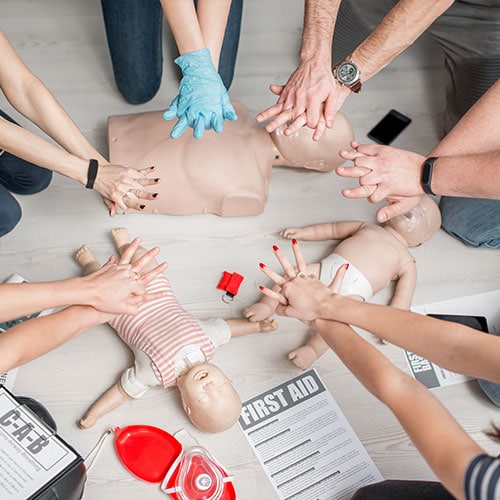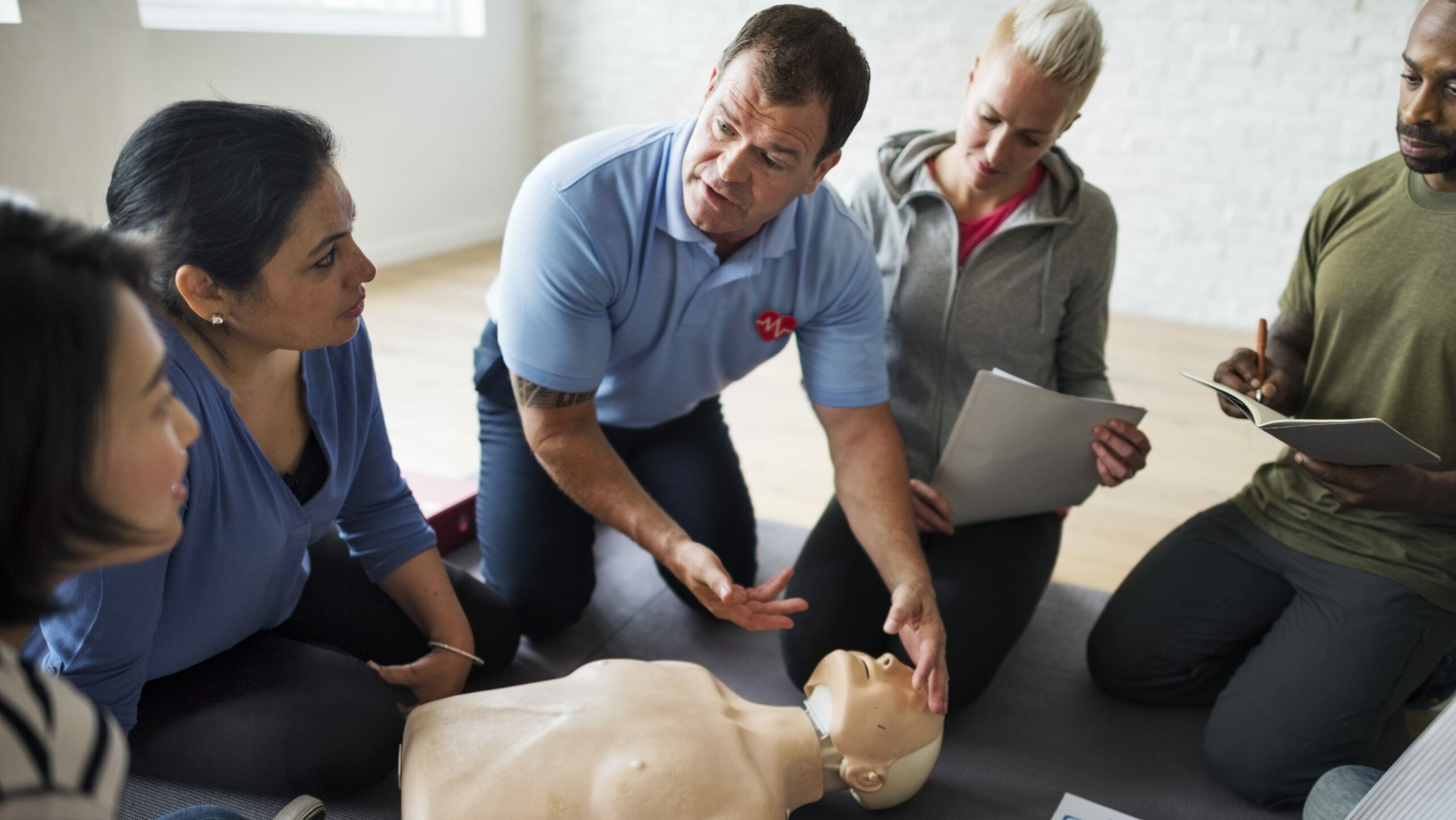Introduction
In a world where crashes can take place at any moment, understanding how to respond successfully can be the distinction in between life and death. Cardiopulmonary resuscitation (MOUTH-TO-MOUTH RESUSCITATION) is a vital ability that everyone need to consider finding out. However with so many choices available, browsing the globe of mouth-to-mouth resuscitation training courses can feel overwhelming. So, which one is best for you? This short article aims to assist you with the numerous CPR training courses available, assisting you select the best fit for your needs.
Understanding CPR and Its Importance
What is CPR?
Cardiopulmonary resuscitation (CPR) is an emergency treatment done on individuals whose heart has actually stopped defeating or who have actually discontinued breathing. It entails chest compressions and rescue breaths to preserve blood circulation and oxygenation up until innovative medical help arrives.
Why is mouth-to-mouth resuscitation Important?
The importance of mouth-to-mouth resuscitation can not be overstated. Data reveal that immediate mouth-to-mouth resuscitation can increase or even triple a sufferer's chances of survival after heart attack. Understanding CPR not only equips you with the abilities to save lives but additionally boosts your confidence in emergency situations.

When Must You Utilize CPR?
CPR needs to be initiated when a person is unresponsive, not taking a breath typically, or exhibiting signs of serious distress. Being able to recognize these circumstances swiftly can save valuable minutes.
Navigating the World of Mouth-to-mouth Resuscitation Courses: Types Available
Basic Life Assistance (BLS) Courses
What is BLS?
BLS courses are developed for healthcare providers and professionals who need to preserve qualification in standard life support strategies. These training courses cover important abilities such as high-grade upper body compressions, air passage monitoring, and utilizing an Automated External Defibrillator (AED).
Who Should Take BLS Courses?
If you're a health care employee, caretaker, or a person aiming to improve their medical knowledge, a BLS training course may be appropriate for you.
Heartsaver ® CPR/AED Courses
What are Heartsaver ® Courses?
The Heartsaver ® program uses courses customized for laypersons. It focuses on grownup, child, and baby CPR methods in addition to AED usage.
Who Ought to Take into consideration Heartsaver ® Courses?
These training courses are excellent for instructors, coaches, parents, and anybody in charge of others' safety that may require to act in an emergency situation.
First Help Program vs. Emergency Treatment and Mouth-to-mouth Resuscitation Course
What Does an Emergency treatment Course Cover?
A first aid course typically covers the fundamentals of dealing with injuries such as cuts, burns, fractures, and choking occurrences without focusing on resuscitation methods.
Why Integrate Emergency treatment with CPR Training?
Combining first aid training with a CPR program furnishes you with comprehensive emergency reaction skills. By comprehending both first aid and resuscitation strategies, you'll be better prepared to deal with different emergencies.
Advanced Heart Life Support (ACLS)
What is ACLS Training?
ACLS training surpasses basic life assistance by consisting of sophisticated medical abilities like administering medicines and managing breathing failure.
Who Requirements ACLS Certification?
ACLS qualification is frequently needed for health care specialists operating in critical care setups such as health centers or emergency rooms.
Choosing the Right Course for You: Factors to Consider
Your Degree of Experience
Before joining in any program, examine your existing level of expertise relating to emergency treatment and CPR strategies. Novices might take advantage of starter programs like Heartsaver ®, while seasoned individuals might go with more intensive training like BLS or ACLS.
Your Responsibilities
Consider your role in your community or workplace. If you are in charge of others' safety-- like a coach or educator-- you could want to invest time in comprehensive first aid and mouth-to-mouth resuscitation training.

Course Format: In-Person vs. Online Options
In-Person Training Advantages
- Hands-on experience Immediate responses from instructors Networking opportunities
Online Training Advantages
- Flexibility Convenience Often less costly
Understanding Certification: What You Required to Know
Duration of Certifications
Most accreditations last in between a couple of years prior to requiring renewal; nevertheless, this varies by organization.
Recognized Organizations Offering Certification
Several companies supply respectable accreditation programs:
- American Heart Organization (AHA) Red Cross National Safety Council (NSC)
Finding Quality Educating Providers
Researching Neighborhood Options
Look into regional hospitals or recreation center providing first aid courses to locate hassle-free choices near you.

Online Resources
Many companies use online training components that provide accreditation upon conclusion-- an exceptional alternative if time restraints are an issue.
Costs Connected with Various Courses
|Course Kind|Ordinary Price|| ---------------------|----------------|| Fundamental Life Assistance|$100 - $150|| Heartsaver ®|$50 - $80|| First Aid Only|$60 - $100|| ACLS|$200 - $300|
How to Plan for Your Course
Pre-Course Recommendations
Before attending class:
Review any offered materials. Wear comfy clothing. Bring any required supplies listed by your instructor.What Happens After Completion?
After efficiently completing your chosen program:
You'll obtain a certification card. Keep it updated according to your company's guidelines. Apply what you've discovered on a regular basis via practice if possible!Common False impressions About First Aid and Mouth-to-mouth Resuscitation Training
Misconception 1: Just Healthcare Professionals Required This Training
This might not Look at this website be additionally from the truth! Everybody can take advantage of recognizing exactly how to administer emergency treatment or perform CPR!
Misconception 2: I'll Never Have To Use It
Emergency scenarios arise unexpectedly; being prepared is constantly wise!
FAQs About Emergency treatment Certificates & Courses
How long does it require to finish a normal emergency treatment course? Many emergency treatment programs take around four hours yet can differ depending on content depth.
Will I receive a certificate after finishing my course? Yes! The majority of reliable organizations provide certifications upon effective completion.
How commonly do I need to renew my certification? Normally every two years; talk to your certifying organization.
Can I take these courses online? Definitely! Numerous organizations supply on-line options permitting flexibility.
Are there age demands for taking these courses? Generally no age limitation exists; nevertheless, parental approval may be needed under certain circumstances.
Do employers call for employees to have these certifications? Lots of companies do like staff members trained in very first aid/CPR-- it shows dedication towards workplace safety!
Conclusion: Your Trip Starts Now!
With a lot of alternatives readily available when it comes down picking which program matches best-- whether it's Standard Life Support (BLS), Heartsaver ®, Advanced Heart Life Support (ACLS), or even just general Emergency treatment-- the key takeaway stays clear: Taking proactive steps towards enhancing your knowledge base around first aid & & cardiopulmonary resuscitation will inevitably empower YOU! By investing time right into browsing the world of CPR programs sensibly today ensures preparedness tomorrow-- since every second matters during emergencies!